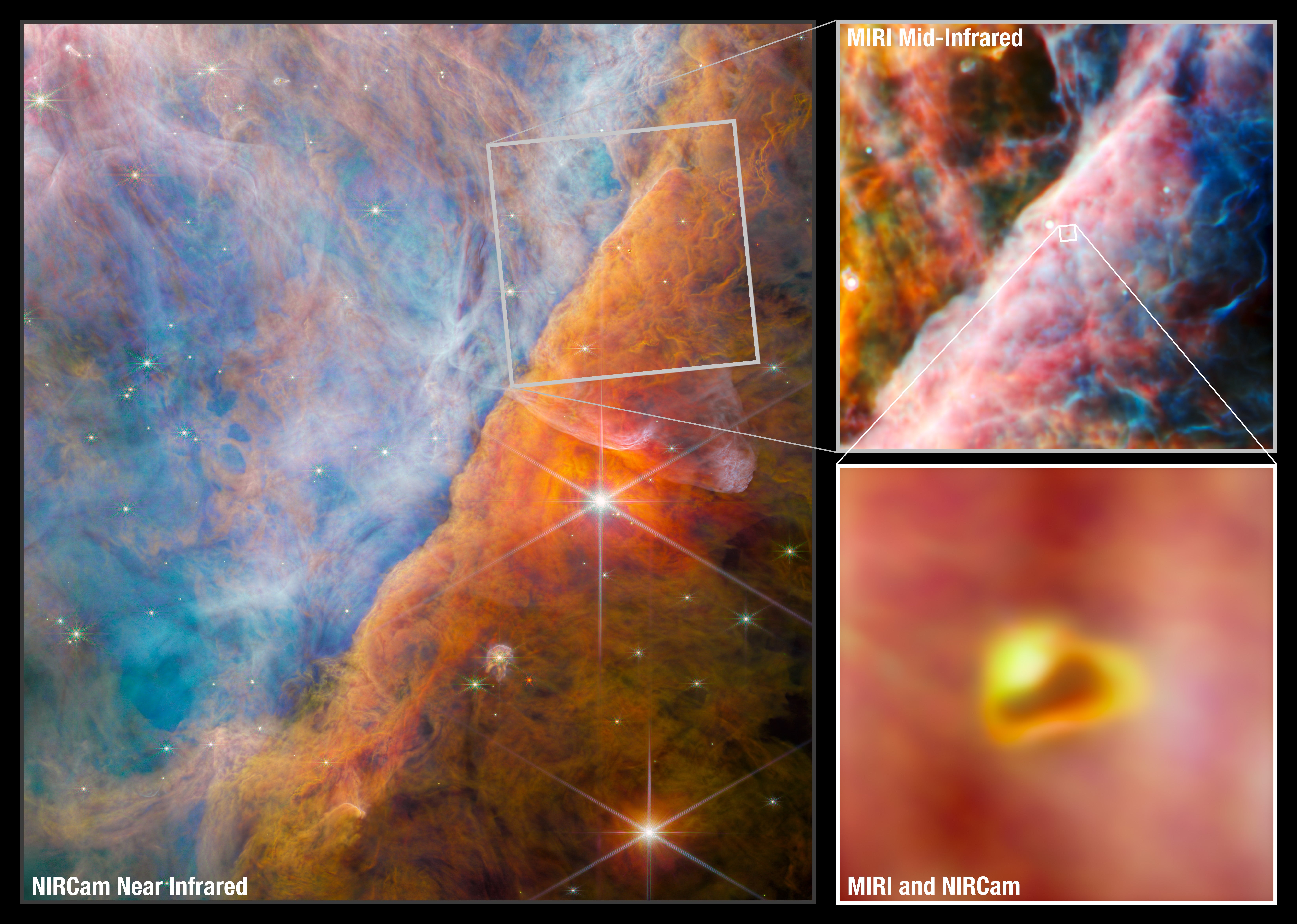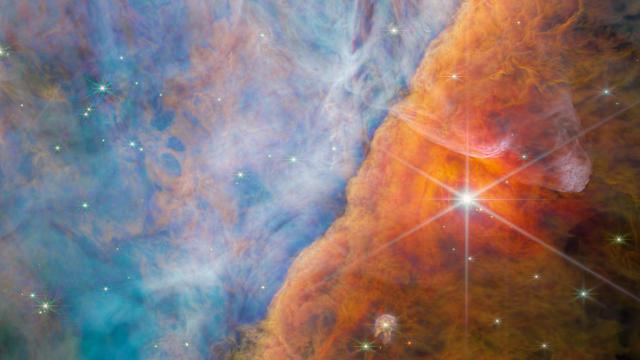The Webb Space Telescope recently peered into a gassy region of the Orion Nebula and managed to spot a carbon-based molecule that could be a “cornerstone of interstellar organic chemistry,” according to a European Space Agency release.
The molecule has never been detected in space before, the release stated. It was found in a system called d203-506, about 1,350 light-years from Earth. The system is surrounded by gas and dust, and has a small red dwarf star — about one-tenth the mass of the Sun — at its centre. A preliminary version of the team’s research describing the discovery was published in Nature.
The molecule is the methyl cation (CH3+), and while it doesn’t react efficiently with hydrogen, the universe’s most abundant element, it frequently reacts with other molecules. An ion is an atom or molecule with a net electric charge; a cation is a positively charged ion (hence the + in CH3+’s name). Due to its unique properties, CH3+ is theorised to be an important building block of interstellar carbon chemistry.
“This detection of CH3+ not only validates the incredible sensitivity of James Webb but also confirms the postulated central importance of CH3+ in interstellar chemistry,” said Marie-Aline Martin-Drumel, a spectroscopist at Paris-Saclay University and co-author of the research, in the ESA release.

Webb’s image of the star-protoplanetary disk system showcases the telescope’s power. Launched in December 2021, the telescope has been releasing scientific images since July 2022. The telescope images at infrared and near-infrared wavelengths, which allows it to cut through gas and dust that can shroud many cosmic phenomena from the view of visible light telescopes, like Hubble.
That makes Webb a unique tool for imaging particularly intimate events, like hot regions of stellar birth that occur deep within gassy, dusty clouds. The recently imaged disk is part of the Orion Nebula; you can see how the nebula looks different to Webb versus Hubble here.
Both the old and new images of the nebula were imaged as part of the PDRs4all scientific collaboration, which aims to image and analyse Photo-Dissociation Regions (PDRs), where stars’ ultraviolet radiation creates warm regions of gas and dust.
The largest image of the region was taken by Webb’s Near-Infrared Camera, or NIRCam. Its image of the smaller region was taken by its Mid-Infrared Instrument, or MIRI. The system itself is shown in a composite image taken by both instruments.
The end product is a remarkable showcase of what Webb can do: pluck out a single star system from a sweeping region of gas and dust. And while this system was relatively nearby, Webb can also peer into the ancient universe to see primordial galaxies, especially by using gravitational lensing to magnify distant light.
Webb also took its own images of the Pillars of Creation — tendrils of the Eagle Nebula filled with gas and dust — and the difference between Hubble and Webb’s famous view of that structure is equally stark.
